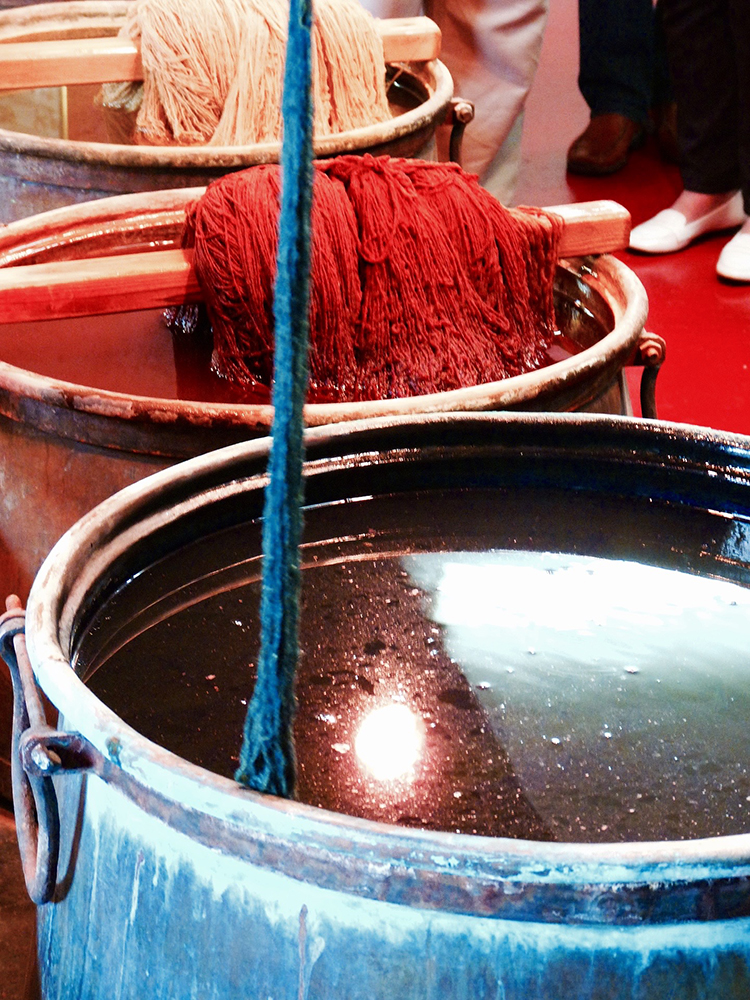


We all know that fashion at its core is far from sustainable. It actually has one of the highest ecological footprints (second largest polluter of the world, the first being oil). With that being said, designers and people surrounding this industry have been finding alternatives to help make it a little bit more sustainable. Brands have started taking matters into their own hands by using natural ways to dye fabric. Fragmentario is a Brooklyn based natural dye company founded by a Parson’s graduate, Maria Elena Pombo. She figured out that you could use an avocado pit to turn cotton into a deep crimson color, meanwhile onion skins could turn silk into rich warm yellow/purple tones. The unique thing about using natural techniques to dye fabrics is that each piece will vary due to the fabric type, the length of time its submerged for, and even the mineral content of the water will affect the finished product. Also, the type of plant, root, flower, or even food will change the fabric in a different way. Meaning, an avocado from America will leave a different hue then one grown abroad.
So what’s the environmental appeal to natural dying? The majority of the products used to dye these fabrics would’ve been thrown away (avocado pits and vegetable skins to name a few). Pombo visits local co-ops and other food stores to take their scraps so she can compost it for her dyes. Not to mention, with natural dyeing there’s no exposure to harsh chemicals. That means clothing, workers, and the environment all get a little of a break. Things like this really make you think, we ask so many questions about how our food is produced that you’d think this one would be next.
ファッションの中心的な部分が、サステイナブルとは程遠いという事はご存じでしょう。実際、最も高いエコロジカルフットプリント(世界で2番目に大きい汚染物質で、一番は石油です)の一つです。そんな中、多くのデザイナーや業界人達は、少しでもそれを防ごうという変化を探し続けてきました。幾つかのブランドは、生地の染色方法に自然な手法を取り入れる事を始めています。Fragmentarioはブルックリンに本拠を置く自然染料会社で、パーソンズの卒業生であるMaria Elena Pomboによって設立されました。彼女は、アボカドの種を使うと綿が深紅色になると考え、タマネギの皮はシルクを暖かい黄色/紫色に変えることができました。 自然技法を染色に用いる面白い手法は、それぞれの生地によって変化が生まれ、染色時間や水の含有量もその出来栄えに影響します。植物、根、花、更には食物のタイプによっても生地に違った変化をもたらします。つまり、アメリカのアボカドは、海外で栽培されたアボカドとは異なる色相を残します。
というわけで、自然染料の魅力はなんでしょう?これらの織物を染色するのに使用された製品の大半は捨てられていました(いくつか例を挙げるとアボカドの種と野菜の皮)。Pomboは地元の生活協同組合や他の食品店を訪れてスクラップを取って、染料で堆肥化を実現しました。言うまでもなく、自然染色では、厳しい化学物質に曝されることはありません。これは衣類、労働者そして環境といった全てに於いて、少なからずの変化と言えるでしょう。我々にとってとても感慨深いことで、食物がどのように生産されるかという多くの疑問点が、次の課題となることでしょう。